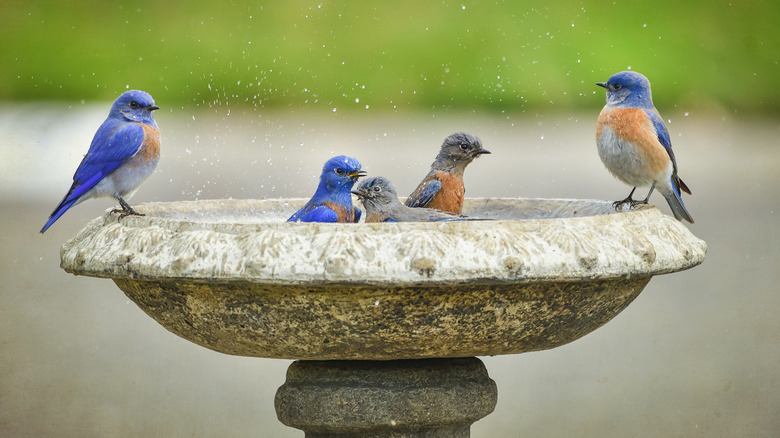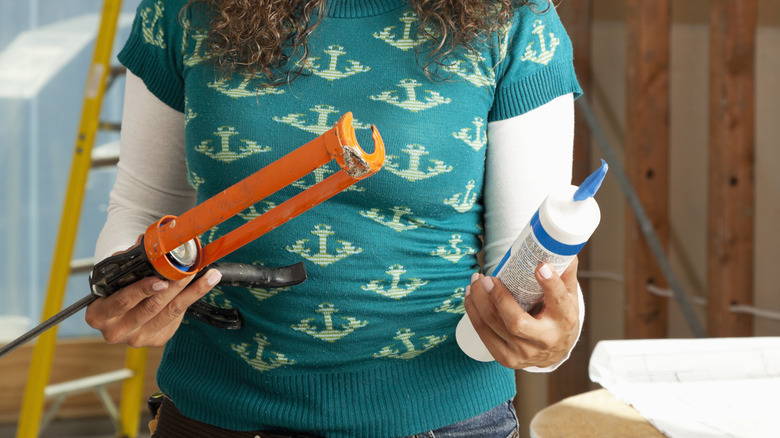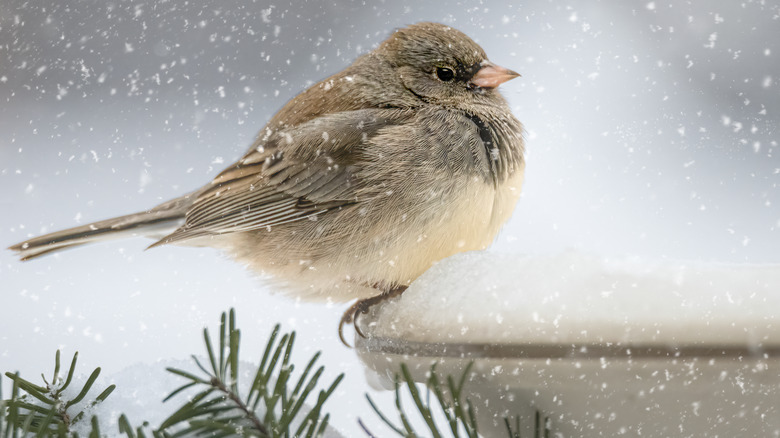How To Seal A Cracked Bird Bath For The Safety Of Your Feathered Friends
Cracks, leaks, weathering ... once you've had your bird bath for several seasons, it's bound to suffer some of these inevitable injuries. A water feature in your backyard is a top way to attract birds, so if your bird bath isn't holding water, don't throw it away! Whether your basin is made of concrete, metal, plastic, or glass, there are safe and easy ways to patch it up so the birds can keep splashing in non-toxic bliss. A few simple steps with a safe product will repair, restore, and prolong the life of your bird bath. Just fill clean fractures with FDA-approved caulking, let it cure fully, and coat them with bird-safe sealants that will extend the life of your birdie pool.
Many experts recommend bringing your bird baths inside once most of its visitors have left for the season to prevent breakage and wear. The freezing-thawing cycle that happens in the cold months can wreak havoc on your purchase. However, even in the winter, there are non-migratory birds that need a drink and a bath. Don't let weather damage — or the fear of it — limit the life and year-round use of your bird bath when you can toughen it up with ease.
Glues and caulks for cracks
What you use to repair and protect your bath depends on what it's made of. For concrete, stone, or mosaic bird baths, Drylok makes several products that fill gaps and reinforce surfaces. Start by giving your bath a good scrubbing before your fix-it session. See how your bird bath will sparkle with the help of this kitchen essential that is cheap and safe enough to eat. A quick-setting hydraulic cement can fix both leaks and that are threatening to become leaks. Mix this product with water, and fill the hole or weak area with the solution. Work it into the hole or crevice with your gloved hand or a masonry blade. It sets up very quickly (within three to five minutes), but you can also smooth it further after five minutes.
There are caulks and silicone sealants deemed safe by the FDA that work wonders on plastic baths as well as other surfaces. Be sure to source one that is labeled as approved by these watchdogs, since some caulks can be toxic to birds after they are cured. Look for FDA-approved food-safe silicone sealants that patch baths up beautifully. You can also rely on commercial kitchen caulk. These compounds fill and expand into holes and cracks to seal in water. Clean the bath's surfaces well before using, and be sure to let any caulk cure for at least 48 hours before you refill the bath.
Sealants for protection and prevention
Many caulks and silicone products go by the name of "sealant," but here we refer to ones that serve as waterproof protectant coating for the bath. Using something to coat the bath will allow it to endure more seasons. There are food-safe epoxy resins that create a durable, waterproof coating that's also non-toxic for birds. It may not be as durable as a weather sealant meant for outdoor use, but you can rest easily knowing that it won't harm your birds.
Some bird enthusiasts recommend using marine-grade polyurethane to weatherproof baths. Since it's intended to come into constant contact with water, it may be a good option. However, there isn't much data available about whether it is truly safe enough to protect animals from toxins when they're drinking directly from a container that's treated with it.
A gentler option, especially if you have a wooden bird bath, might be using beeswax. This substance naturally repels water and is non-toxic. You may need to reapply it more frequently than you would a synthetic product, but you can feel confident that it doesn't contain the potentially harmful ingredients in many commercial products.


